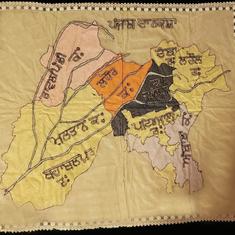On Wednesday, Telangana health authorities announced a polio vaccination drive because a strain of polio had been found in the Amberpet Nala in Hyderabad. The announcement triggered alarm that polio had resurfaced in India, a country that the World Health Organisation had declared polio-free in 2012. However, the presence of vaccine-derived polio viruses is expected in sewage systems across the country for at least the next six to 12 months, say public health experts, reiterating the government’s position that there is no cause for alarm.
Polio vaccines contain attenuated, or weakened viruses, exposure to which trigger immune responses in children who receive the virus. “The attenuated form cannot multiply, is not pathogenic and cannot be transmitted,” said SG Kasi, former member of the Indian Academy of Pediatrics. "When back mutations occur it reacquires neuro-virulence and capacity to be transmitted in the community."
The polio strain found in Hyderabad was a vaccine-derived type 2 virus. “This means someone has excreted vaccine-derived type 2 virus into the sewage system and it has undergone mutations whereby it develops the capacity to get transmitted,” said Kasi. "It has developed the capacity to cause neurovirulence and be transmitted also."
The polio mechanism
All three polio strains were originally seen only as wild strains that caused infections in children and subsequent paralysis. Mass immunisation programmes have been carried out in countries across the world to counter this public health threat. India has been considered one of the big polio immunisation successes, with the last wild virus infection occurring in 2011.
In 2012, a year after the last wild polio infection, the WHO declared India polio free. India’s mass polio immunisation programme has been carried out through the administration of oral doses of polio vaccines contained attenuated type 1, type 2 and type 3 polio viruses. These weakened viruses trigger immune responses in children safeguarding them against the disease. The vaccine is passed through excreta into the environment from where it may even enter the systems of children who have not been vaccinated, transferring immunity to the larger population.
A side effect of the oral vaccine is that, sometimes, in immunodeficient children, the weakened vaccine can mutate, multiply and get the capacity to transmit the polio disease. This becomes the vaccine-derived poliovirus.
The big switch
“The last case of wild polio virus type 2 was seen in India in 1999 and it was the last global case,” said Pradeep Haldar, deputy commissioner of health with the Ministry of Health and Family Welfare. Since then, health officials have continued to use to the oral polio vaccine with the goal of eradicating type 3 and type 1 wild poliovirus as well.
There was talk of stopping use of the type 2 strain in the vaccine. But health officials worried that if they discontinued the type 2 vaccine, then the last children who got vaccinated would continue to shed the vaccine into the environment and children who haven’t got the vaccine would be susceptible to polio again. This is because, unlike small pox whose only host is human, the poliovirus thrives in sewage and can multiply there till it finds a human host.
However, India started recording cases of vaccine-derived polio infections and non-polio acute flaccid paralysis caused by the vaccine itself.
After the WHO declared India polio-free, an international plan was devised to switch over from the trivalent vaccine containing all three strains of polio to a bivalent vaccine containing only type 1 and type 3 strains. Health experts have also long been advocating the use of an injectable vaccine that contains only the killed virus instead of the oral vaccine that contains the weakened virus.
India switched over to the new polio immunization mechanism on April 26th this year, when all trivalent oral polio stocks were destroyed.
Polio in sewage
However, it is likely that officials will keep finding the virus in sewage systems. “From the trivalent vaccine the virus is going to get excreted, it is going to get into the environment,” said Kasi. "In western countries it may not persist in the environment for more than a few weeks but in tropical countries, in environments that are very conducive to polio transmission we expect that it might last for six to 12 months."
In the last few years, India has recorded several events of vaccine-derived polio in the environment. There were two cases of infection in babies, one in Delhi and one in Patna, last year.
“In Delhi, vaccine-derived poliovirus was seen in an immunodeficient child," said Haldar. "It was an acute flaccid paralysis case and the stool sample showed the virus. We carried out immunisation with trivalent oral polio vaccine because we had trivalent oral vaccine then. In case of Patna also we responded with trivalent oral vaccine.”
To ensure that there is no polio outbreak in Telangana now, the government is carrying out a special immunisation drive using the injectable vaccine, given that trivalent oral polio vaccine has been destroyed as part of the global switch. “A detailed microplan is still ongoing and we are carrying it out,” said Haldar. "We need manpower to be there and since it is an injectable and not oral polio vaccine we need centres to be set up and anganwadi workers available."
A potential problem, Kasi said, was a global short supply of the injectable vaccine.
“The strategy was to change to injectable and give one dose of bivalent oral polio to the entire population," he said. "This should have happened six months before the switch. Unfortunately, because the demand has suddenly gone up for injectable from all polio vaccine-using countries and there is not enough supply.”
This raises the spectre that, babies born after the switch, who are not getting injectable polio won’t have immunity against type 2.
Haldar, however, denied reports that the government has to import the trivalent injectable vaccine from Geneva for the mass immunisation drive in Telagana and said that there were enough stocks in facilities in Chennai.










